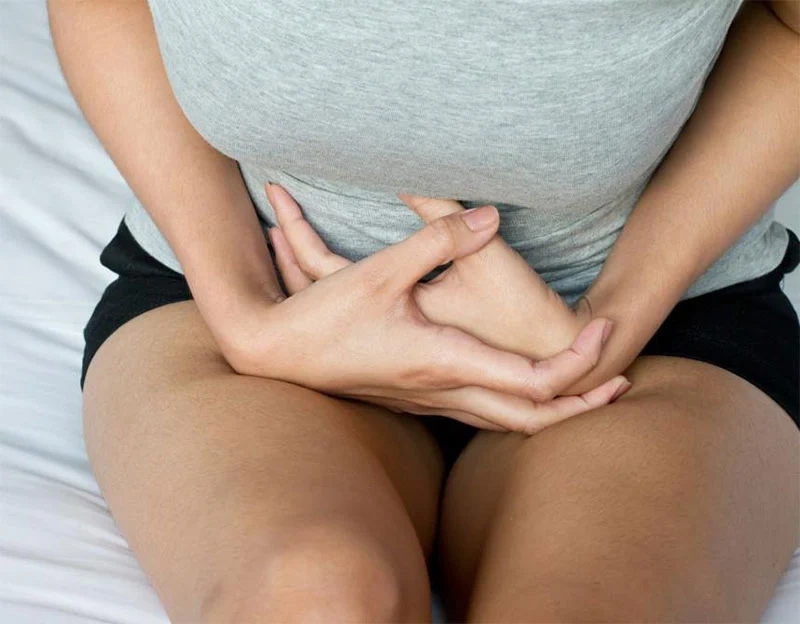Urinary tract infection (UTI) Treatmentwith Dr. Monga's
What is UTI?
A urinary tract infection (UTI) is a bacterial infection that affects the urinary system, primarily the bladder and urethra. While UTIs can happen to anyone, they are more common in women due to physiological factors. There are two main types of UTIs: cystitis (bladder infection) and urethritis (urethral infection). Symptoms include a burning sensation while urinating, frequent urge to urinate, cloudy or strong-smelling urine, and pelvic discomfort. If left untreated, the infection can spread to the kidneys, causing serious complications. Despite being common, UTIs should never be ignored, as timely diagnosis and treatment are essential to prevent further health risks.
Causes of UTI
-
Bacterial Infection
 Bacteria from the genitals, anus, or sex toys enter the urethra.
Bacteria from the genitals, anus, or sex toys enter the urethra.
-
Sexual Activity
 Increases the risk of bacteria reaching the urinary tract.
Increases the risk of bacteria reaching the urinary tract.
-
Medical Conditions
 Diabetes, obesity, or kidney stones can raise infection chances.
Diabetes, obesity, or kidney stones can raise infection chances.
-
Hygiene & Products
 Use of spermicides, diaphragms, or poor hygiene can trigger UTI.
Use of spermicides, diaphragms, or poor hygiene can trigger UTI.
What Makes Dr. Monga's Treatments So Impactful?
-
ETHICAL PRACTICE
Shastrokt Prescription-Based Ayurveda Practice - As Per Ayurveda Manuscripts
-
TEAM OF PROFESSIONALS
Qualified Doctors, Certified Dieticians, Dedicated Counsellors, Trained Staff
-
SPREADING HAPPINESS
Over 7,00,000 Patients Connected From Across India and Abroad
-
INTEGRATED HEALTH CARE
Modern Medicine & Traditional Ayurveda Integrated
-
VAST EXPERIENCE
75+ Glorious Years Of Healthcare Practice
-
WINNING TRUST
Effective And Safer Healthcare Solutions Over 7,00,000 Patients Connected From Across India and Abroad
Book an Appointment
When to consult doctor for UTI?
The Polycystic Ovaries Treatment in Delhi is also recommended when a woman has enlarged ovaries that contain follicles surrounding the eggs. Due to this, the ovaries may not function properly or regularly.-
 Severe Pain while urinating
Severe Pain while urinating
-
 Visible blood or dark-colored urine
Visible blood or dark-colored urine
-
 Fever, chills, or body aches.
Fever, chills, or body aches.
-
 Persistent UTI Infection not improving
Persistent UTI Infection not improving
The fourth or the last stage of infection is the tertiary stage. Almost 15-20 % of people who are undiagnosed reach this stage. This stage can occur decades after the first infection, and this stage is life-threatening. Urinary tract infection (UTI)treatment in Delhi at the initial stage can save you from the severe outcomes of the disease.

Why Choose Dr. Monga's For UTI Concern?
We don't just treat symptoms—we provide permanent relief. As one of the leading clinics in Delhi-NCR for Urinary Tract Infection (UTI) treatment, we offer a unique, integrated approach that combines modern allopathy with the ancient wisdom of Ayurveda—a methodology exclusive to us in the region. Our mission is to deliver personalized, high-quality care that focuses on holistic healing and long-term wellness.
Backed by a team of highly experienced specialists with over 20 years of expertise, we ensure clinical excellence in diagnosing and treating even the most complex UTI cases. By utilizing advanced diagnostic tools and innovative treatment protocols, we provide precise and effective care tailored to each patient's unique needs.
Infection control and hygiene are at the core of our practice. We adhere to stringent medical protocols to prevent complications and maintain a safe, sterile treatment environment. Beyond treatment, our dedicated follow-up team remains in continuous contact with patients, offering ongoing support and guidance throughout their health journey.
Urinary tract infection treatment and management - Integrated Approach
A productive consultation for Urinary Tract Infection (UTI) treatment begins with proper preparation. At Dr. Monga Medi Clinic, we ensure that every patient, whether a new case or a returning one, receives accurate guidance and effective care. For new cases, we take a detailed medical history, recommend the necessary diagnostic tests, and follow an integrated approach to provide the best possible treatment. For existing cases, we carefully review previous medical records and adjust the treatment plan accordingly.
To make the most of your consultation, we advise patients to come well-prepared. Before meeting our doctors, gather all relevant medical documents, including past prescriptions, diagnostic test results, and your health history, to give a clear picture of your condition. Some cases may require specific tests or precautions, so checking in advance can help streamline the process. We also recommend preparing a list of questions or concerns to discuss with the doctor to ensure no important details are missed. With proper preparation and open communication, we aim to provide you with the best care and effective treatment solutions for a healthy recovery

Meet Our Team
Our dedicated team of highly skilled doctors combines expertise, innovation, and compassion to deliver exceptional medical care tailored to every patient.
Frequently asked questions (FAQ's)
-
1 How can I find the best urologist near me for UTI treatment in Delhi?
You can find the best urologist near you by checking clinic websites, patient reviews, and ratings. Dr. Monga Clinic offers trusted urologists with expertise in UTI treatment.
-
2 What should I expect during my first visit to a urologist in Delhi for UTI treatment?
During the first visit, the urologist will discuss your symptoms, review your medical history, and may recommend tests like urine analysis to confirm the infection before starting treatment.
-
3 How do I book an appointment with the best urologist near me for UTI infection treatment?
You can book an appointment online through the clinic's website, via phone call, or WhatsApp. Dr. Monga Clinic provides simple and quick appointment booking options.
-
4 How long does it take to recover after UTI infection treatment in Delhi?
Most patients start feeling relief within a few days of proper treatment. Recovery time may vary depending on the severity of infection and overall health condition.
-
5 How do I check reviews of the best urologist near me for UTI treatment?
Reviews can be checked on Google, Practo, Justdial, and the clinic's official website. Patient feedback helps you select a reliable and experienced urologist.
-
6 When should I consult a urologist for UTI infection treatment in Delhi?
You should consult a urologist if you experience frequent urination, burning sensation, pelvic pain, or if UTI symptoms keep coming back. Early care prevents complications.
-
7 What tests does a urologist recommend for UTI infection treatment?
Commonly recommended tests include urine analysis, urine culture, and in some cases imaging tests. These help in accurate diagnosis and effective treatment.
-
8 Can the best urologist near me also guide about UTI prevention tips?
Yes, urologists provide both treatment and prevention guidance. They may suggest staying hydrated, maintaining hygiene, and making lifestyle changes to reduce the risk of UTI.
-
9 Can home remedies be used along with UTI infection treatment in Delhi?
Home remedies like drinking water may give temporary relief, but consulting a urologist is important for complete cure. Dr. Monga Clinic combines medical treatment with preventive advice.
-
10 What is the follow-up schedule with the best urologist near me after UTI treatment?
A follow-up visit is usually recommended after the completion of treatment to ensure recovery. Patients with recurrent UTIs may need regular check-ups for long-term care.





